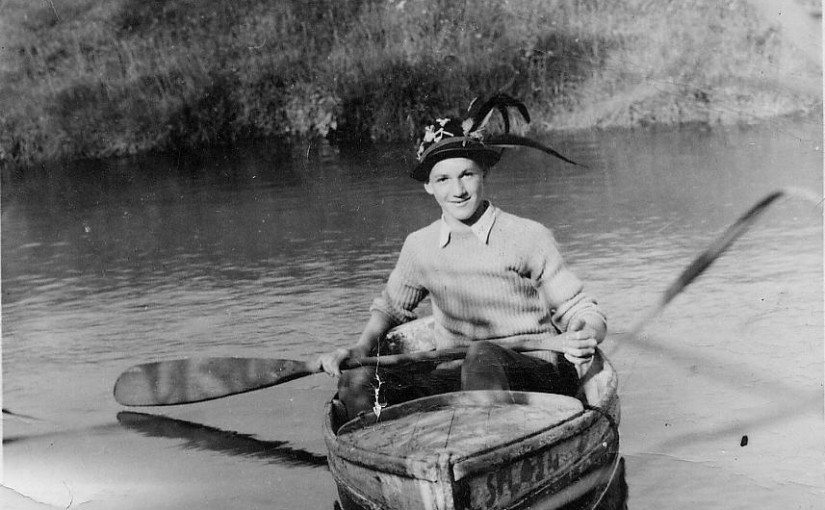By Jimper’s Jottings.
The editor asked readers to identify the mammal in the photograph. I have studied the picture and am sure it is a common rabbit. I believe I am more qualified than a lot of Council bureaucrats that know nothing unless it suits them. My family traded in the skins of the animal for over 108 years till EU rules closed down the factories procession the meat .
We received the skins from all over the British Isles and most of them were sent down to us from Scotland in 40 ton lorries frozen in black bin liners. Our firm were in the trade of air drying the skins and in one month we dried and exported 1,000,000 dozen pelts. They are used to make felt fur hats, billiard table cloths and many other things, but more of that later. The photo in” Rye’s Own” is the typical colour though they came in black, ginger, grey and white though seldom in any two together. In this part of England we call him the rabbit, others call him Thumper, Bunny, Bunny Wunny or Drummer, but by all farmers and growers on those ‘Blasted rabbits’.
The animal costs the British farmer an estimated 3 million pounds in damage each year. The history books do not mention the rabbit till the 13 century so we presume the Normans introduced him for the fur and meat. The early settlers of Australia also introduced it to the Australian Continent and it has turned thousands of users to desert. Before the introduction of the killer virus of myxomatosis the farmers in the out back use to herd the rabbit into huge wire netting pens and killed thousands of them. In the last five years with the mild winters we have been experiencing the rabbit has bred every month of the year.
The flea that transmits the killer myxi lives in the rabbits burrows and with the ? weather the rabbit has lived more of his time out in the open so remaining free from illness. The rabbit is a fine source of meat and on the continent is eagerly sought after. His jacket that my family dealt with was hung on a nail and dried then packed into bales and John Jempson organised lorries to take them abroad. An large percentage went to Lokeron in Belguim They were then boiled in large vats to remove all the fat. This fat was sent to Germany where it was refined into the finest lanolin to be used in lipstick and face cream. There the very best were graded out and the pelts used for fur gloves. The rest were placed in a large cage wheel like the kind you see in a hamster cage. They were then tumbled for twelve hours in sawdust to remove all the water. The product that the tumbling did was a soft pliable clean felt. They are then taken to an operator sitting at a bench ran each one over a revolting blade and cut all the long guard hair off. This hair was sold to weave into strands and one of the finished results with it mixed with sheeps wool is Harris Tweed. With the long guard hair removed the skin is then passed to another operator who shears all the soft under hair off. This is used to make felt. Fifty years or more ago every man wore a hat all the uniforms of bus drivers, Policemen and all the armed forces had uniforms made of rabbit fur, now it is mainly used in the form of felt for billiard table tops. The very best of the felt, those that showed no blue marks on the skin were sent to be turned and turned into the finest parchment leather for book binding.
Once the finest would have been cut into long thin threads and called cut gut, used by doctors to sew up cuts and wounds. The remnants are all shredded and used to make a thin board that is resistant to heat and ballet proof. The tails are put on sticks of wood and used to pollinate plants in green houses. A long time ago now they were also used to make powder puffs for ladies . Any feet on a pelt were cut off and sold as lucky charms on key ring fobs. The six longest whisker of the rabbit is pulled out and sent to Japan where girls with very long finger nails filled into groves sort and grade them to make paint brushes for artists. Any rubbish on the floors is swept up and sold to the Dutch as fertilizer in their glass houses. That is practically all I know of the mystery animal pictured in last months” Rye’s Own” but then who am I to doubt the expert at Rother.
That concludes what I know of an animal that has it pretty well his own way for the last two years with mild winters and little myxi I told you all that August was the last change of my real hot summer weather. Well look at the out come winter dark some days at 9pm and the wind. Then the other night on the television a woman tells us that this year is the sunniest and warmest year on record. Querying this I was informed that taking January, February into account it is! The early months this year was warmer than usual but the sun they must have recorded that a good 20,000 feet above me.
“Rye’s Own” September 2008
All articles, photographs and drawings on this web site are World Copyright Protected. No reproduction for publication without prior arrangement.
